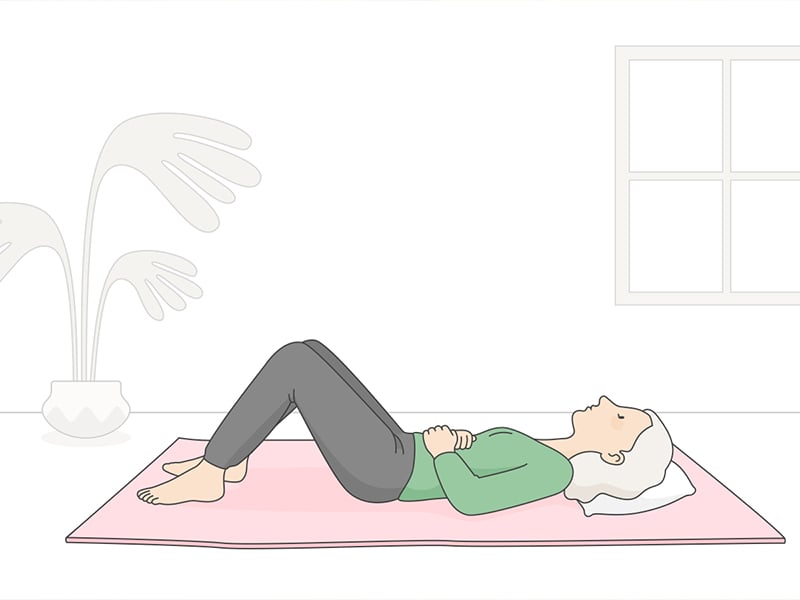The basics
What is COPD?
COPD is an umbrella term that encompasses several progressive lung diseases, including emphysema, chronic bronchitis, asthma (the non-reversible kind), and some forms of bronchiectasis, which is abnormal widening of the bronchial tubes.
One of the first signs people notice is shortness of breath and coughing, though it's common for those in early stages of COPD to assume these signs are just a normal part of aging. A person with COPD might not even detect it at first because the disease can develop for years without perceptible symptoms. It’s important to talk to your doctor if you do notice symptoms. Getting screened early can help identify COPD before major loss of lung function occurs.
Most cases of COPD are caused by inhaling pollutants, usually due to smoking. Even someone who smoked early in life and then quit can develop this disease. In addition, environmental factors can play a role. Being exposed to fumes, chemicals, and dust found in certain work environments contributes to development of the disease. But, even if a person has never smoked or been exposed long-term to strong lung irritants, genetics is thought be a factor, as well.
Common COPD symptoms
Symptoms of COPD often donʼt appear until significant lung damage has already occurred. And they usually worsen over time, particularly if exposure to lung irritants continues. Symptoms include:
Shortness of breath
Dyspnea is difficult or labored breathing, the sensation that you cannot get enough air into your lungs. It often occurs during physical activities.
Frequent coughing
A daily cough and sputum production at least three months a year for two years in a row suggests chronic bronchitis. Don’t wait this long to get checked out.
Wheezing
Take note if you’re making a high-pitched whistling sound when you breath, especially while exhaling.
Throat clearing
Having to clear your throat first thing in the morning, due to excess mucus in your lungs, may be an indicator of COPD.
Blue lips or fingernail beds
Called cyanosis, this bluish tint indicates insufficient oxygen in the blood.
Exacerbation
When symptoms worsen for a sustained period of time, beyond normal day-to-day breathlessness or cough, this is called an exacerbation. It may indicate that a change in treatment is warranted.
Consult with your doctor if you have any of these symptoms, frequent respiratory infections, or lack of energy.
If you’re caring for someone with COPD…
Know the signs of exacerbation
If symptoms get worse, don’t wait it out. Call the doctor when the person with COPD has increased difficulty breathing during normal activities, increased coughing, or a great deal of chest pain when coughing. Swollen hands or feet, muscle cramps, fatigue, and weakness are also signs to be aware of. If your loved one wakes in the night with shortness of breath or has green, yellow, or bloody mucus, call your doctor or seek emergency medical assistance.
Schedule time for you
It may be hard to enjoy activities when you’re worried about someone with COPD. But your well-being is just as important. In addition to keeping up with medical appointments, don’t forget to make time for you: meet friends at the art gallery, refinish that antique chair, play racquetball, or get out in the garden. And be sure to put it on your calendar so you’ll really do it. This is when caregivers find it helpful to add a care professional to their team.
Round up your team
When your duties increase while caring for a loved one, you may find yourself with more responsibilities than you can reasonably handle. Accept help from friends or relatives who offer it. Or, call a family meeting to discuss routine chores that need to be accomplished and who has the capacity to do them. Keep a list of "To Dos" so you can hand off a specific task when someone asks how they can help. Enlist the help of professionals if family members are already overextended or live too far away to be there in person.
Learn as much as you can
COPD treatment may consist of pulmonary rehabilitation—prescribed exercise, nutrition, counseling, and disease education. Since rehab can significantly improve COPD symptoms, as a caregiver you can encourage your loved one to go to rehab and even attend rehab sessions together to learn more about it and to show support. You should also learn how to use any prescribed equipment, such as supplemental oxygen, a handheld bronchodilator inhaler, or a nebulizer.
Kick the habit
If you’re a smoker living with someone coping with COPD, the most important step you can take to improve their health and yours is to stop smoking. Right now. Talk to your doctor about the best program for you.
People with advancing COPD may require supportive professional care in a safe environment to ensure their condition is managed effectively.
Helpful resources
To learn more about COPD or to find resources in your area, visit copdfoundation.org.
Want help finding information or local resources in your community? You can speak with a COPD trained associate now by calling (866) 316-2673.
Living with someone who has COPD? Check out the COPD Foundation FAQ for caregivers.
Looking for information and inspiration from others coping with COPD? Explore these blogs about COPD.
This information is for educational purposes and is not a substitute for the advice of a medical professional. Sources: COPD Foundation and the Centers for Disease Control and Prevention.

